ERC Starting Grants for Laserlab Researchers
ERC Advanced Grants for Laserlab researchers >>>
ERC Consolidator Grants for Laserlab Researchers >>>
ERC Synergy Grants for Laserlab researchers >>>
2023
 |
Maximilian Beyer (LLAMS): Helium dimer ultracold molecules – a platform for fundamental physics and ultracold chemistry |
|
Carl Davies (FELIX): HandShake – Research on novel technology for electively switching magnetisation Carl Davies, researcher in the HFML-FELIX laboratory and the Institute for Molecules and Materials at Radboud University, has been awarded an ERC Starting Grant to develop a new approach for selectively switching magnetic order based on chiral vibrations of the crystal lattice. Specifically, the project – entitled “HandShake” – will explore how circularly polarised oscillations of the lattice can switch magnetisation. |
 |
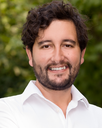
|
Pelayo Garcia de Arquer (ICFO): Nanoscale advance of CO2 electro reduction |
| Samuel Beaulieu (CELIA): Ultrafast topological engineering of quantum materials In his ERC Starting Grant project UTOPIQ, Samuel Beaulieu aims to develop new techniques allowing the measure- ment of electron topology in quantum materials. These new methods will be articulated around the in-depth study of the photoelectric effect, explained by Einstein more than a century ago, which consists of removing elec- trons from matter with light. In addition to measuring the energy and the ejection angle of the electrons, the typi- cal quantities measured in photoemission experiments, the effect of the rotation of the polarization of light during the photoelectric effect will be taken into account. These measurements promise to reveal new information on the topology of electrons within solids. Subsequently, new mechanisms to control the topology of electrons within matter, using ultrafast light pulses, will be developed and investigated in detail. |
 |

|
Marcus Ossiander (IEP-TU Graz): Extreme ultraviolet meta-optics for attosecond microscopy |
| Adrien Leblanc (LOA): Experimental signatures of quantum electrodynamics in the strong field regime Theory of quantum electrodynamics (QED) unifies electromagnetism and quantum physics for the description of the interaction between light and matter. In the so-called “strong field regime”, i.e. when the light intensity is suffi- cient for the QED effects to have a nonlinear response and become preponderant thus producing strong signatures in the laboratory, this theory remains barely explored experimentally and is currently carried out theoretically by perturbative methods. In his ERC Starting Grant project EXAFIELD, Adrien Leblanc aims to create sufficient light intensities to reach conditions beyond the perturbative regime and thus detect stronger QED effects to improve our understanding of the strong field regime of QED physics. |
 |
 |
Hugo Marroux (LIDYL): Solution attosecond chemistry |
| Sérgio Domingos (CLL): Microwave finger-printing artificial molecular motors in virtual isolation With his recently awarded ERC Starting Grant, Sérgio Domingos is exploring new experimental strategies to bring the promise of rotationally resolved spectroscopy to the realm of molecular nanotechnology. The ERC-funded project, MiCRoARTiS, aims to demonstrate the harnessing of conformational dynamics of artificial molecular motors in the gas phase. This class of highly functional molecules can undergo structural changes in a controlled manner when triggered by light or heat. |

|

|
Margherita Maiuri (POLIMI): Manipulation of photoinduced processes by reshaping transition states via transient strong coupling |
| Andrea Trabattoni (DESY): Multi-messenger soft-field spectroscopy of molecular electronics at interfaces Helmholtz junior research group leader Andrea Trabat- toni was awarded an ERC Starting Grant for his project SoftMeter. Using a novel approach combining a series of ultrashort, yet weak field laser pulses, the project aims at resolving ultrafast processes occurring at the interfaces of two different materials that are in the gas phase. Within a perturbative approach based on the concept of electron self-diffraction, SoftMeter will circumvent the drawbacks of strong-field spectroscopic techniques. The outcomes could have significant impacts for catalytic and solar harvesting technologies exploiting aerosols interfaces for instance. |

|
 |
Matz Liebel (LLAMS): Phototransient microscope |
2022
|
Romain Géneaux (LIDYL): Controlling spin angular momentum with the field of light In his recently awarded ERC Starting Grant, Romain Géneaux will study the interaction between light and the spin of electrons, an intrinsic quantum property directly responsible for macroscopic properties of materials, such as magnetism. The goal is to answer a fundamental question: are there direct and coherent interactions between the electronic spins of a solid and the electric field of light? |
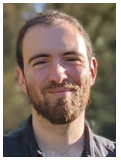 |
2019
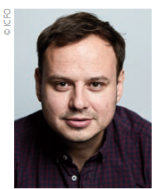 |
Dmitri Efetov (ICFO): Superconductivity in ‘magic angle’ graphene |
| Matteo Lucchini (POLIMI): Attosecond dynamics in two-dimensional materials Two-dimensional (2D) materials might become the building blocks of the electronics of the future. Many of the exotic physical, elec-tronic, and chemical properties of 2D materials that arise from elec-tron confinement in two directions, however, are not understood, and no suitable tools exist to study the ultrafast processes unfolding during light-matter interaction. In his ERC Starting Grant project, Matteo Lucchini therefore aims to explore electron, exciton, and spin dynamics on a sub-femtosecond time-scale by developing a pump-probe beamline for transient absorption and reflectivity measurements based on arbi-trarily polarised attosecond pulses in a two-foci geometry. |
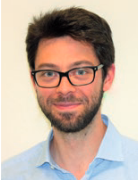 |
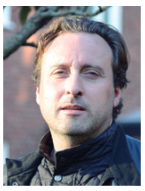 |
Andreas Ehn (LLC): Filming cold plasmas with lasers |
| Mikkel Brydegaard (LLC): Detecting insects with lasers To be able to manage insects, both those which are considered pests and those which are wanted as pollinators, one has to understand their ecology: which species can be found in a particular area, and how many, and what are their daily rhythms and lifecycles? With his ERC Starting Grant, Mikkel Brydegaard will develop a laser tool to determine insect’s wing thickness on a nanometre scale from a distance of several kilometres, using the wings as a ‘laser mirror’. The main aim of the tool is to be able to identify different species of insects in flight. Currently, different species of mosquitos are identified by DNA analysis, but Brydegaard and his colleagues have already shown that wing thickness can in principle be used to distinguish closely related mosquito species. |
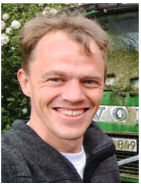 |
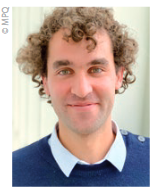 |
Guillaume Salomon (MPQ): Searching for fractional quantum states |
2018
|
Benjamin Fingerhut (MBI): Understanding ultrafast biomolecular processes |
| Elias Kristensson (LLC): Videos of ultrafast phenomena Past methods to probe ultrafast events – occurring on picosecond timescale or faster – have mostly relied on pump-probe scanning, yet these can only measure the dynamics of such processes if they are repetitive. Understanding all spatiotemporal aspects of ultrafast phenomena, however, requires experimental means to spatially, spectrally and temporally resolve them. Recently, Elias Kristensson invented a coding imaging concept called Frequency Recognition Algorithm for Multiple Exposures (FRAME) that can film at up to 5 trillion frames per second, unifying femtosecond temporal resolution with spectroscopic compatibility. In his ERC Starting Grant project, Kristensson aims to develop novel diagnostic tools based on FRAME and to apply FRAME videography to study ultrafast events, of which the temporal evolution could not be visualized in the past. Examples are filming plasmas and laser filaments, and imaging fast molecular processes, such as vibration, rotation and fluorescence. In addition, a spectroscopic FRAME set - up will be developed to monitor extremely fast chemical reactions in real time. |
2017
|
Andreas Reiserer (MPQ): A scalable quantum network |
| Simon Wall (ICFO): Fluctuations in high-temperature superconductors One of the major open questions in condensed matter physics is the origin of high-temperature superconductivity. Electron interactions are considered responsible for this phenomenon, but despite over thirty years of research, experimental proof has been difficult to obtain. With his Starting Grant project SeeSuper, Simon Wall aims to break this deadlock by applying new techniques to study the superconducting state. His strategy is to probe high-temperature superconductors through their nanoscale and femtosecond fluctuations. He will focus on three key parameters in superconductors: phonons, spins and nanoscale phase separation, with the aim of revealing the coupling mechanism. Wall hopes to prove the hypothesis that lattice anharmonicity is the key missing ingredient to explain the origins of high temperature superconductivity. His experimental approach combines transient optical spectroscopy and time-resolved diffuse X-ray scattering to measure the lattice response to large amplitude coherent vibrations, time-resolved non-linear optical spectroscopy to directly probe spin dynamics, and resonant soft X-ray holography to image dynamics on the nanoscale. |
2016
©ICFO |
Michael Krieg, a former postdoctoral researcher at Stanford University, has come to Laserlab-Europe partner ICFO, Barcelona, with an ERC Starting Grant. His newly established researchgroup at ICFO will use the roundworm Caenorhabditis elegans as a model to study the importance of the mechanical properties of cells for health and disease. For his Starting Grant project, which is titled ‘How to build a brain? Engineering molecular systems for mechanosensing and protection in neurons’, Krieg will exploit microfluidic and nanotechnological tools to apply precise forces to single cells or animals. His group will also try to make a so-called optogenetic neurotransmitter system – where light is used to control neural activity – to rewire neural circuits in diseased animals. Michael Krieg arrives from Stanford University where, for the past years, he has focused his postdoctoral research on deciphering the mechanical basis of the sense of touch in the lab of Miriam Goodman in the Department of Molecular and Cellular Physiology. |
| Sébastien Corde (LOA): Miniature beam-driven plasma accelerators As conventional accelerator techniques are reaching their limits, new concepts are emerging. Using an ionised gas – or plasma – the energy gained by the accelerated particle per unit length can be increased by several orders of magnitude. In his Starting Grant project M-PAC (Miniature beam- driven Plasma ACcelerators), Sébastien Corde proposes to power plasma accelerators with laser-accelerated electron beams based on 100-TW-class laser systems, in order to miniaturise the so-called ‘beam-driven plasma accel- erators’. He will try to generate and preserve the beam quality required for high-energy colliders and hopes, among other things, to address challenges relevant for the acceleration of positrons, the antimatter counterparts of electrons. |
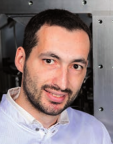 ©Ecole ©EcolePolytechnique |
2015
 |
Ultracold atoms provide an ideal experimental model system for many phenomena in solid-state physics. It is hard, however, to obtain controllable long-range interatomic interactions. In his Starting Grant project, Christian Gross (MPQ) will use a technique called Rydberg dressing to create long-range interactions whose strength, distance dependence, and isotropy can be controlled. He plans to induce Rydberg dressing in ultracold atoms with ultraviolet laser light, enabling him to explore the supersolidity expected in ultracold bosonic systems with soft-core interactions, as well as realize quantum magnets that are designable almost at will and feature unprecedented coupling strengths. As such, his project will not only push the limits for quantum simulators for solid-state physics, but will also create the possibility to experimentally study fundamentally new many-body systems. |
2014
| Edouard Berrocal (LLC): Detailed Characterization of Spray Systems Using Novel Laser Imaging Techniques When using a beam of visible light to probe a scattering medium composed of droplets, smoke, powders or other aerosols, photons interact several times with the randomly distributed particles. This multiple scattering of light induces strong blurring of images and introduces severe errors in laser-based measurements of particle size and concentration. Because of this problem, for example, detailed characterization of spray systems is still lacking. In 2008, Edouard Berrocal revealed that with a technique called Structured Laser Illumination Planar Imaging (SLIPI), many aspects of this problem can be overcome. In his ERC Starting Grant project, he aims to develop three novel imaging techniques to probe spray dynamics, droplet size and concentration, and spray temperature, respectively. The main goal is to find better injection strategies for combustion engines in order to reduce emission of pollutants. |
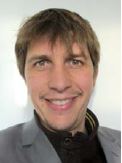 |
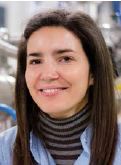 |
Francesca Calegari (POLIMI): Steering Attosecond Electron Dynamics in Biomolecules with UV-XUV Light Pulses One of the challenges facing science is to understand the chemical origin of DNA damageinduced mutations. Upon exposure to UV light, DNA nucleobases become electronically excited. This process potentially favours mutagenic miscoding of the DNA sequence. The main target of Francesca Calegari’s Starting Grant project is to study the electron dynamics occurring in UV photo-excited biomolecules with unprecedented temporal resolution. Electron dynamics will be resonantly activated in biomolecules by few-optical-cycles UV pump pulses and subsequently probed by attosecond XUV pulses or few-femtosecond UV pulses. Through time-resolved measurements of the molecular photo-fragmentation, gas-phase spectroscopy will be used to elucidate the role of electrons in the photo-reactivity of the molecule in a solvent-free environment. Aromatic complexes including DNA nucleobases (and ultimately DNA) will be investigated with the aim of tracking in real time the electron dynamics preceding structural changes potentially leading to damage. |
| Darrick Chang (ICFO): Frontiers of Quantum Atom-Light Interactions The key to the success of atomic physics and quantum optics relies on our understanding and ability to control the way that light and matter interact with each other at the level of their constituent particles – single atoms and photons. From fundamental tools such as laser cooling and trapping or cavity quantum electrodynamics come potentially powerful applications, e.g., quantum simulation and quantum information processing. However, these same techniques have clear limitations which preclude many parameter regimes or paradigms for the utilization of cold atoms. In his Starting Grant project, Darrick Chang aims to completely re-define our ability to control light-matter interactions at the quantum level. In order to accomplish this feat, his team will exploit control over the dimensionality and dispersion of light, engineering of quantum vacuum forces, and the strong optical fields and forces associated with confining light to the nanoscale. |
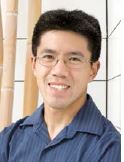 |
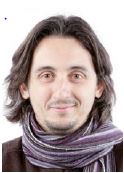 |
Carlo Sias (LENS): An Ultracold Gas Plus One Ion |
| Matteo Zaccanti (LENS): Superfluidity and Ferromagnetism of Unequal Mass Fermions with Two- and Threebody Resonant Interactions Superfluidity and magnetism characterize a wealth of interacting fermion systems encompassing solid-state, nuclear and quark matter environments. Despite decades of interdisciplinary investigations on these topics, several important questions about these phenomena are still unanswered. Within his ERC Starting Grant project, Matteo Zaccanti wants to use a new, ultracold mixture of two fermionic atoms (Lithium6 and Chromium53) to address some of those questions experimentally. The special mass ratio between the two atoms will allow him to obtain tuneable three-body interactions, whereas so far people only have been able to create tuneable interactions between two atoms. Furthermore, the prediction is that atom recombination into paired states of the species used will be suppressed to a high degree. Zaccanti will disclose the predicted exotic superfluid and magnetic phases using high-resolution imaging and state-of-the-art spectroscopy. |
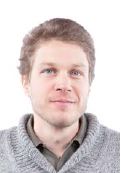 |
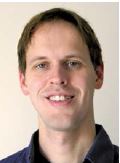 |
Stefan Witte (LLAMS): High-resolution Microscopy without Lenses While imaging technology is one of the most widespread diagnostic techniques in science and industry, the need for specialized optical components can often be problematic. Lensless imaging is an elegant answer to the problem with optical components, which may be large, costly and sensitive to alignment. Recently, Stefan Witte has shown that the amplitude and phase of an object field can be reconstructed with high contrast and resolution by detecting wavelengthdependent differences in wave propagation. Using this method, a high-resolution image can be reconstructed using only a light source, an image sensor, and a computing device. Witte’s aim with his ERC Starting Grant is to develop lensless microscopes for extreme-ultraviolet radiation, as well as to image many cell cultures in parallel. In addition, he plans to develop smartphone-based lensless microscopes for low-cost point-of-care diagnostics in developing countries. |
2013
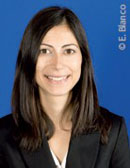 |
Intracellular transport plays a key role in many processes inside cells and its breakdown can have catastrophic consequences. For example, transport failures are an early indicator and a likely cause of many neurodegenerative diseases. Understanding what goes wrong with intracellular transport during disease, requires knowledge of how so-called motor proteins work together to transport cargo, but those proteins are difficult to visualise due to their small size and complex environment. Melike Lakadamyali from ICFO (Barcelona) received a Starting Grant from the ERC to try and overcome this visualisation problem by combining several advanced techniques (such as single particle tracking, quantitative single molecule counting, genetic manipulation, and fluorescence labelling) with ‘nanoscopy’ – a branch of fluorescence microscopy in which the diffraction limit is overcome. Lakadamyali believes that this multidisciplinary approach will for the first time provide a detailed picture of how motor proteins function inside living cells. |
2012
| Caterina Vozzi (CUSBO): Ultrafast dynamic imaging of complex molecules Molecules can be stimulated to emit extreme ultraviolet (XUV) light, using intense femtosecond laser pulses. In this process, an electron is extracted by the laser light and subsequently brought back to the molecule to recombine, which gives rise to the emission of an XUV photon. It has been shown that this XUV light contains information on the electronic structure of the molecule, and allows imaging of the electronic orbits in the molecule. So far, only molecules consisting of two atoms have been investigated in this way. Recently, Caterina Vozzi has demonstrated a new approach for extending the imaging of molecular orbitals to triatomic molecules. With her ERC Starting Grant, she will try to develop time-resolved tomographic imaging of the evolving electronic structure in complex molecules undergoing electronic or vibrational excitation. | 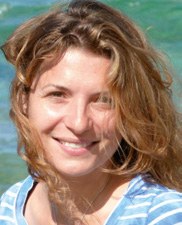 |
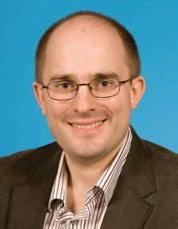 |
Alex Robinson (CLF): Magnetic guiding of electrons for fusion In Inertial Confinement Fusion (ICF) experiments, nuclear fusion is generated by heating and compressing pinhead-sized fuel pellets, usually consisting of a mixture of deuterium and tritium. In the Fast Ignition variant of ICF, the heating is performed with a high-current beam of ultrafast electrons, generated by a petawatt laser pulse. A major difficulty lies in the fact that these electrons tend to spread out, which can be countered by application of strong magnetic fields to ‘guide’ the electrons to the target. With his ERC Starting Grant, Alex Robinson will carry out advanced computer simulations to see how ‘structured guiding’, relying on the automatic generation of magnetic fields due to the interaction of the fast electrons with resistivity gradients in the target, can be used to keep the electron beam collimated. |
| Masaki Hori (MPQ): Precision laser spectroscopy of antiprotonic and pionic atoms With laser spectroscopy of antiprotonic atoms one can investigate the symmetry between matter and antimatter. According to the standard model, antimatter atoms should weigh exactly the same as their matter counterparts and oscillate with exactly the same frequency. Masaki Hori’s ERC project aims at measuring the mass of the antiproton relative to the electron mass with a precision of 10- 11, performing laser spectroscopy on helium atoms with one of the shell electrons replaced by an antiproton. The other part of Hori’s project – laser spectroscopy of pionic helium atoms – represents an even bigger challenge. Here pions substitute one of the electrons in the helium atoms. This experiment will be the first one which attempts to study an atom which contains a so-called meson by laser spectroscopy. |
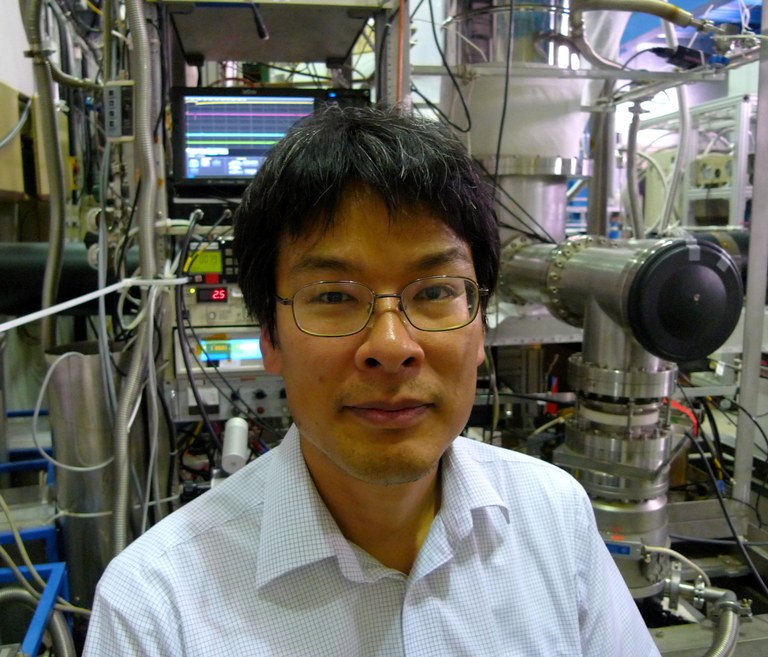 |
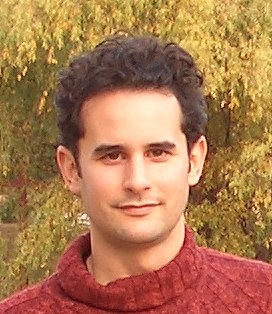 |
Jérôme Faure (LOA): Femtosecond laser-plasma based electron source How do atoms move in a solid? How long does it take for a phase transition to occur or for a molecule to change its configuration? The direct observation of ultrafast phenomena that occur at the atomic scale in complex matter requires the use of short wavelength femtosecond x-ray or electron sources. Such sources have become available in the past decade and have permitted the first direct observations of atomic motion – however with a limited time resolution. Faure’s ERC project aims at developing a femtosecond electron source using the interaction of a high repetition rate, few optical cycle laser with a plasma. In addition to studying relativistic laser-plasma interaction in the few cycle limit, the project should eventually provide a new electron source which will be used in diffraction experiments for probing the structural dynamics of condensed matter with a very high temporal resolution. |
| Giacomo Roati (LENS): Quantum simulation of two-dimensional fermionic systems Ultracold atoms are emerging as ideal quantum simulators of many-body phenomena. In particular, the combination of ultracold atoms and optical potentials has opened up a new way of studying condensed matter problems with higher controllability and unprecedented clarity. In his ERC project, Giacomo Roati aims to move further in this direction, using a new experimental set-up to investigate the physics of strongly correlated fermions in two dimensions. His focus will be on understanding the behaviour of high-temperature superconductors, which is a huge challenge to theorists because of the strong interactions between the electrons involved. Roati will take the experimental approach, exploiting the possibility to address single atoms, and to vary the temperature and interaction strength between fermionic atoms in optical lattices created by lasers. |
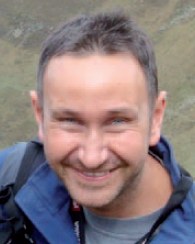 |
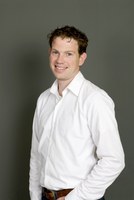 ©ICFO/E.Blanco |
Frank Koppens (ICFO): Exploring Plasmons in Graphene Graphene, a one-atom-thick layer of carbon, has attracted enormous attention in diverse areas of applied and fundamental physics. Among other things, graphene is a promising host material for light that is confined to nanoscale dimensions, more than 100 times below the diffraction limit. Due to its ultra-small thickness and extremely high purity, graphene can support strongly confined propagating light fields coupled to its charge carriers: surface plasmons. In his ERC project, Frank Koppens will experimentally investigate the new and virtually unexplored field of graphene surface plasmonics, and combine this with other properties of graphene to demonstrate the potential of carbon-based nano-optoelectronics. His aim is to explore the limits of light concentration, manipulation and detection at the nanoscale, to dramatically intensify nonlinear interactions between photons towards the quantum regime, and to reveal the subtle effects of cavity quantum electrodynamics on graphene-emitter systems. |
2011
| Roberta Croce from the VU University Amsterdam receives a Starting Grant of 1.7 million euro for research on molecular acclimation mechanisms in photosynthesis. Life on earth is sustained by the process that converts sunlight energy into chemical energy: photosynthesis. It takes place in plants, algae and photosynthetic bacteria. These organisms are much more dynamic than we usually think they are and there are able to change their operational behavior on a time scales ranging from seconds to weeks. This dynamic behavior is of paramount importance for their performance and survival under varying natural conditions. How do the organisms respond to varying environmental conditions and how does this influence their photosynthetic performance? These are the central questions that Prof. Croce is trying to answer at the molecular level. Over the last years she has developed and optimized a range of methods that now allow her to take up this challenge. This involves a high level of integration of biological and physical approaches, ranging from plant and algae transformation to ultrafast spectroscopy. Understanding these processes will in the future help to increase the efficiency of food and biofuel production |
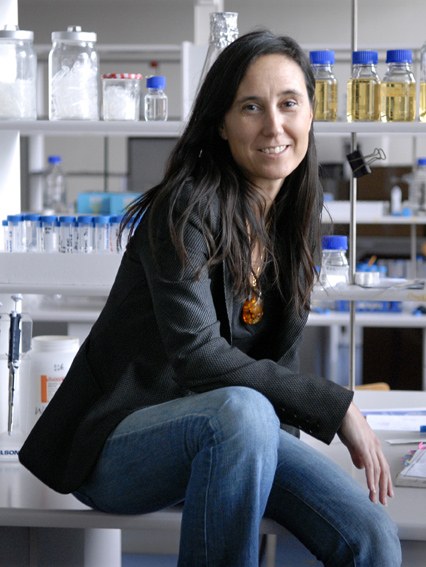 |
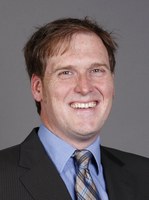 |
Dr. Randolf Pohl (MPQ): Determining the size of the helium nucleus using muonic helium ions Muonic helium ions consist of a helium nucleus orbited by a single muon instead of an electron. Since muons are about 200 times heavier than electrons, the radius of their orbit is smaller by the same factor. As a consequence, the energy of the orbiting muon is influenced considerably by the charge of the helium nucleus. This provides a means to determine the charge radius of the helium nucleus ten times more accurate than ever before. With his ERC Starting Grant project, ‘Charge Radius Experiment with Muonic Atoms’, Randolf Pohl hopes to resolve the big discrepancy in the proton size found recently in similar experiments with muonic hydrogen. |
| Prof. Hugues de Riedmatten (ICFO): Bringing quantum computing beyond proof-of-principle Quantum information networks, based on the interaction between light and matter, hold promises for revolutionary advances in information processing, but so far, they have not been taken beyond the proof-of-principle stage. De Riedmatten aims to demonstrate long lived and robust entanglement between two remote solid state quantum memories, based on rare-earth doped solids. Also, he will try to establish a quantum gate between two qubits stored in ultracold ensembles of laser-cooled Rubidium atoms. Hugues De Riedmattens ultimate goal within his ERC Starting Grant project ‘Ensemble based advanced Quantum Light Matter interfaces’ is to establish entanglement between the solid state quantum memory and the cold atomic ensemble. He hopes the results from this project will open new avenues towards the practical realisation of scalable quantum networks and repeaters. >>> more details |
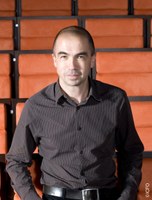 ©ICFO/E.Blanco |
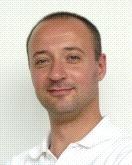 |
Dr. Davide Iannuzzi, VU University Amsterdam: Small, but many: scalability to volume production in fiber-top technology During his ERC Starting Independent Research Grant, Davide Iannuzzi came up with a new idea that allows the fabrication of micromachined structures on the tip of an optical fiber with a series of cost effective steps (patent filed). He has now asked for the support of ERC to demonstrate the scalability of that fabrication method. With this Proof-of-Concept grant, he will be able to show that, thanks to this invention, cost effective batch production of fiber-top cantilevers is indeed possible. |
| Prof. Stefan Kuhr (University of Strathclyde and MPQ): Manipulation of fermions in an optical lattice Optical lattices created by standing waves of laser light, can be used to capture single atoms like eggs in an egg crate. Building on his experience with bosonic atoms in optical lattices at MPQ, Stefan Kuhr will build a similar experiment with fermions. Studying the interaction between individual fermionic atoms, Kuhr hopes he will gain a deeper understanding of the mechanisms leading to macroscopic properties of matter such as magnetism and superconductivity. The ERC Starting Grant project 'Single-atom-resolved detection and manipulation of strongly correlated fermions in an optical lattice’ will also help Kuhr establish his new position as Chair on Quantum Information at the University of Strathclyde. | 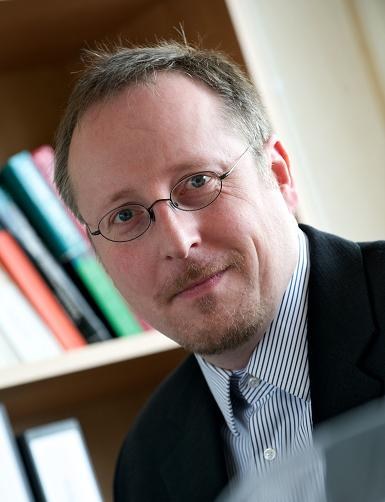 |
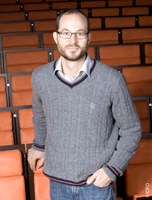 ©ICFO/E.Blanco |
Prof. Morgan Mitchell (ICFO): Measuring magnetic fields with light and ultracold atoms. Ultracold atoms provide the most sensitive instruments for measurements of time, gravity and magnetic fields, and they are already employed in atomic clocks, gravimeters and magnetometers. Quantum optical effects such as entanglement and squeezing have the potential to improve the sensitivity of these atomic instruments even further. In his ERC Starting Grant project ‘Atomic Quantum Metrology’, Morgan Mitchell will apply several state-of-the-art quantum optical techniques to measure magnetic fields with ultracold atoms. He aims to test some revolutionary new proposals for quantum metrology, such as interaction-based measurements and quantum compressed sensing. >>>more details |
2010
| Prof. Gijs Wuite (LaserLaB Amsterdam) has been awarded one of the 2010 European Research Council Starting Grants to pursue his project "Dissecting a minimal genome: a physical investigation of DNA transactions in mitochondria". The ERC Starting Grants aim to allow top-level established scientists to carry on with pioneering frontier research projects. Predictive modeling of complex biological systems, i.e. systems biology, is becoming increasingly important. This development is driven by growing amounts of quantitative data of biological systems. Experimental tools mostly centered around laser technology developed by physicists play a major role in this quantification of biological systems, since they provide a means to directly visualize, manipulate, and/or control the dynamics of complex biological machines. | 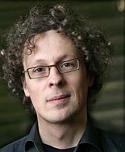 |
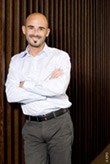 ©ICFO/E.Blanco |
ICFO Group Leader Prof. Romain Quidant was granted an ERC Starting grant for his project “New Frontiers in Plasmon Optics: From nanochemistry to quantum optics”. The project aims to investigate how plasmonics could contribute to control, with nano-meter accuracy, deposition of a wide range of molecules or nano--objects on a surface pre-patterned with noble metal nano-structures. Beyond demonstrating the feasibility of this novel approach, we propose to exploit it to increase the sensitivity of bio-chemical plasmonic sensing and surface enhanced Raman scattering. The second part of the project will study the use of plasmon nano-optical tweezers to develop a novel integrated quantum platform. The developed platform will be tested for applications to quantum simulation. >>> more details |
2008
| The purpose of the project ADONIS (Attosecond Dynamics ON Interfaces and Surfaces) is to extend attosecond metrology to condensed matter and bring attosecond solid-state spectroscopy to fruition. The project, with Reinhard Kienberger from MPQ as prinicpal investigator will allow control and real-time observation of a wide range of hyperfast electronic motion directly on its natural, i.e. attosecond (1 as = 10-18 s) time scale in solids, on surfaces and interfaces. New insight into ever smaller structures of matter and their ever faster dynamics hold promise for pushing the frontiers of many fields in science and technology. | 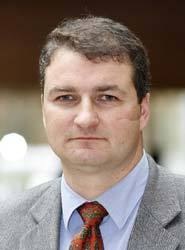 |
 |
Dr. Davide Iannuzzi has been awarded a 1.8 MEuros Starting Independent Research Grant in 2007 and a 150 kEuros Proof-of-Concept Grant in 2011. The research project gravitates around fiber-top technology and its applications, with particular emphasis on biophysics and medicine. During the first three years of research, the group has been able to demonstrate the added value of this technology, bringing the idea from blackboard to full maturity. As a result of this effort, in 2011, Davide Iannuzzi and Dutch entrepreneur Hans Brouwer founded Optics11 B.V. , a privately funded company that was created with the purpose of producing and marketing fiber-top products. Over the first three years, Iannuzzi's group has brought the technology from the blackboard to market |
| Dr. Hendrick Bethlem (LaserLaB Amsterdam) received an ERC Starting Grant to build a molecular fountain. In this fountain, electric fields are used to decelerate, cool and subsequently launch polar molecules. These molecules fly upwards some 10-50 cm before falling back under gravity, thereby passing a microwave cavity or laser beam twice - as they fly up and as they fall back down. The effective interrogation time in such a Ramsey type measurement scheme includes the entire flight time between the two traversals through the driving field, which can be up to a second. This long interrogation time will allow for extreme precision measurements on molecular structure to a level at which fundamental physics theories can be tested. | 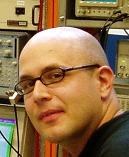 |
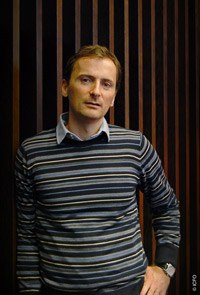 ©ICFO |
Prof. Antonio Acín, from ICFO in Barcelona, was awarded a Starting Grant by ERC for the project PERCENT - Percolating Entanglement and Quantum Information Resources through Quantum Networks. Quantum communication networks consist of several nodes that are connected by quantum channels. By exchanging quantum particles, the nodes share quantum correlations, also known as entanglement. Essential for the future development of quantum communication is to understand the design of efficient protocols for the distribution of entanglement between arbitrarily distant nodes. The main objective of the PERCENT project is to construct the theory of entanglement distribution through quantum networks and, ultimately, to provide a global picture of the distribution of quantum information resources over realistic quantum communication networks. >>> more details |

